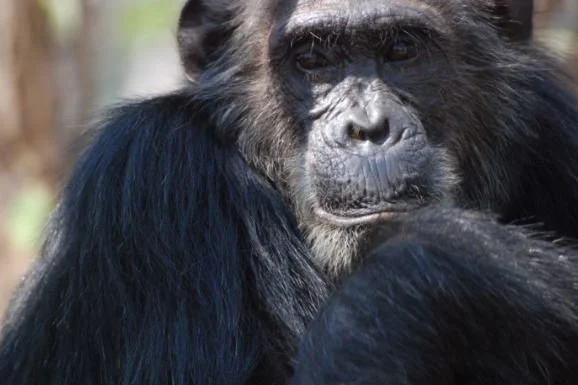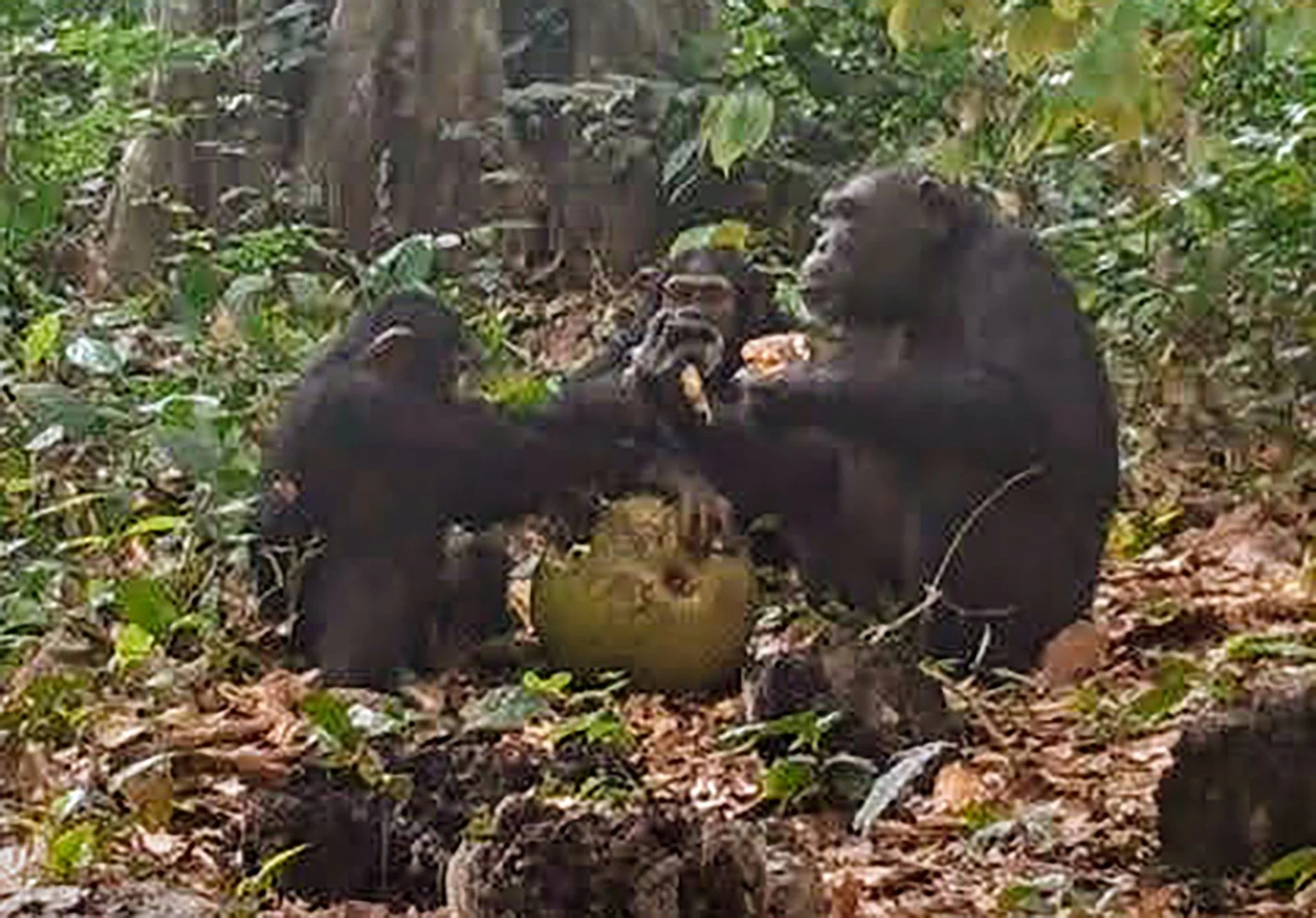New Study Records Musical Chimps Drumming, Hooting
Wild chimpanzees drum with rhythm, according to a new study by primatologists from the University of St Andrews. Not only that, chimps from either side of Africa have their own distinct beats.
The study – a group effort by St Andrews, the University of Vienna, and a “music evolution expert” form Sapienza University of Rome – watched and recorded chimpanzee drumming in rainforests and savannah-woodlands from 11 communities across six different populations on the east and west sides of Africa.
The “drums” are huge roots of trees that form large flat buttresses, which the chimps slap with their hands and feet, often accompanied by shrill hoots and other vocalizations. The sounds can carry over a kilometer, even through a dense forest.
“Making music is a fundamental part of what it means to be human—but we don’t know for how long we have been making music,” says St Andrews professor Catherine Hobaiter. “Showing that chimpanzees share some of the fundamental properties of human musical rhythm in their drumming is an exciting step in understanding when and how we evolved this skill. Our findings suggest that our ability to drum rhythmically may have existed long before we were human.”
As with humans, chimp music is regional. “Chimpanzees from east Africa prefer to alternate short and long intervals in their drumming,” says researcher Vesta Eleuteri. “While chimpanzees from west Africa — like humans—often drum isochronously, which is when sounds occur one after another with the exact same amount of time between them: like the ticking of a clock, or the kick drum in electronic music.” The west African drummers also keep a slightly faster beat than their eastern cousins.
The researchers next plan to study how chimps coordinate hands and feet to make different drumming rhythms, how they choose different trees to create distinct sounds, and perhaps even how these rhythms shape social behavior.
The research appears in the journal Current Biology.
University of St Andrews
Photo credit: chatGPT








